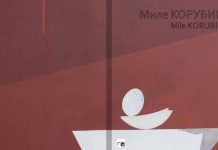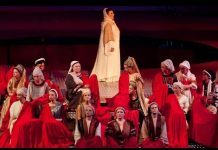Flowers and nature have inspired artists throughout the centuries and still inspire many artists today. Lida Sherafatmand is an artist who increasingly becomes one of the important contemporary painters today as she has evolved floral art into a new dimension with its social engagement from social sciences, as well as the integration of new fields of knowledge in energy psychology, and energy medicine today. Empowering and motivational, her art-stories challenge the audience to find solace in this time of distress and sadness. She paints fairytale worlds with an abundance of beautiful flowers. It is her way of combating the less beautiful sides of human existence and call for their transformation: “The more I hear violent news, the more I paint gentle flowers”. – (Lida Sherafatmand).
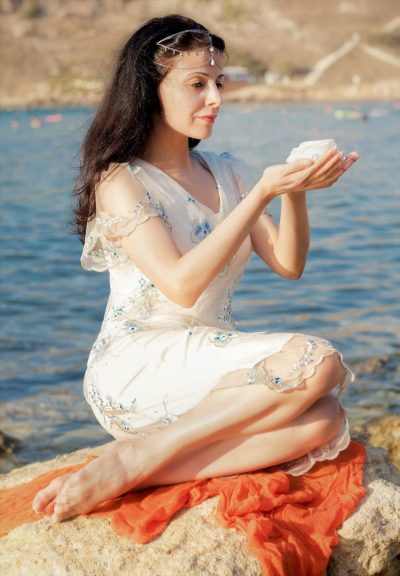
(2017)
In 2016, she conceived the artistic concept of ‘Florescencism’, which has a double meaning: Flowers are the main physical subject in her paintings and at the same time a metaphor used in many cultures and languages to symbolize the blossoming of an individual or a civilization. In June 2020 together with a group of millennial artists the concept of ‘florescencism’ was developed further to respond to the Covid-19 pandemic crisis around the world. Milko Nestoroski from Struga co-wrote the text with Lida and they started an atelier in Struga for the concept.
”Florescencism” is a new ‘ism’ in contemporary art presented by Iranian-Maltese painter Lida Sherafatmand. Sherafatmand started her career with refined, simple to understand, and distinct concepts relating to global peace and human rights. Florescencism relates to blooms and flowers – to state the literal meaning – since “florescence” is typically defined as the process of flowering. Using interdisciplinary approaches, prior research has suggested the relevance of psychological, sociological, historical, symbolic, political, and even botanical aspects related to this artistic trend. However, the issue is more significant when the analysis aims to understand “Flower” as the primary subject matter, rather than just an ornamental element of a painting.”
“Of course, an intercultural aesthetic combined with a post-nationalist approach is attentive to native, local, racial, religious, gender, social, and other factors. These factors could be present in a work, even if the main message suggests a universal element beyond those limitations… Certain social groups representing different societies could show profound empathy as well as aesthetic judgment (Braembussche et al., 2008). With its universalistic language, Florescencism tries to touch audiences and inspire them to recall nature’s beauty, harmony, love, and hope. It sends a message to join a grand journey toward a peaceful and better world.”
Extracts from Hajianfard, R. (2021). Florescencism by Lida Sherfatmand in The Context of Floral Art History. KUPAS SENI: Jurnal Seni Dan Pendidikan Seni, 9(1), 104-114. https://doi.org/10.37134/kupasseni.vol9.1.10.2021
Find out more about the Flower Art Museum: https://www.flowerartmuseum.nl/
And about Lida Sherafatmand:
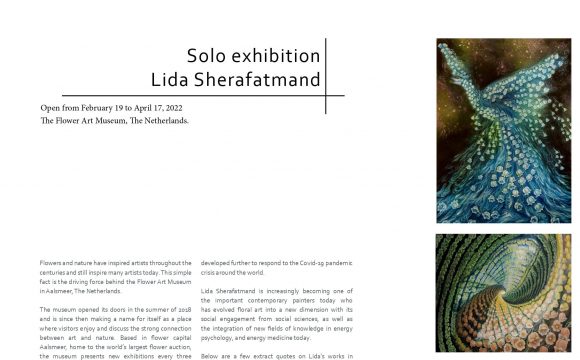
From 19 February to 17 April, this prominent artist will have her Solo Exhibition in Netherlands. The museum opened its doors in the summer of 2018 and is since then making a name for itself as a place where visitors enjoy and discuss the strong connection between art and nature. Based in flower capital Aalsmeer, home to the world’s largest flower auction, the museum presents new exhibitions every three months. It also hosts workshops, concerts and a range of other events, such as the yearly Flower Festival.
Part of the large collection of 80 pieces that Lida will present at the ‘Flower Art Museum’ in Holland will be a series that she is currently finishing for the ‘Nezlobinsky Museum of Natural History Museum’ in Struga. This series is done from the specific flower species which grow in the Struga municipality. As a flower painter Lida has been touched by the large variety of flora in the place, and one of the main reasons she likes to paint in this town.
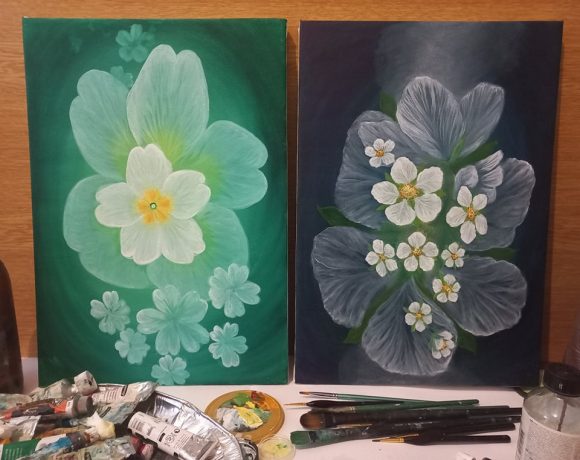



![Слабото здравје и намалена физичка активност на вработените како директен удар врз профитабилноста на компанијата [+ гратис стратешки водич за зголемување на продуктивноста]](https://www.divianarts.com/wp-content/uploads/2024/03/Насловна-слика-218x150.png)

